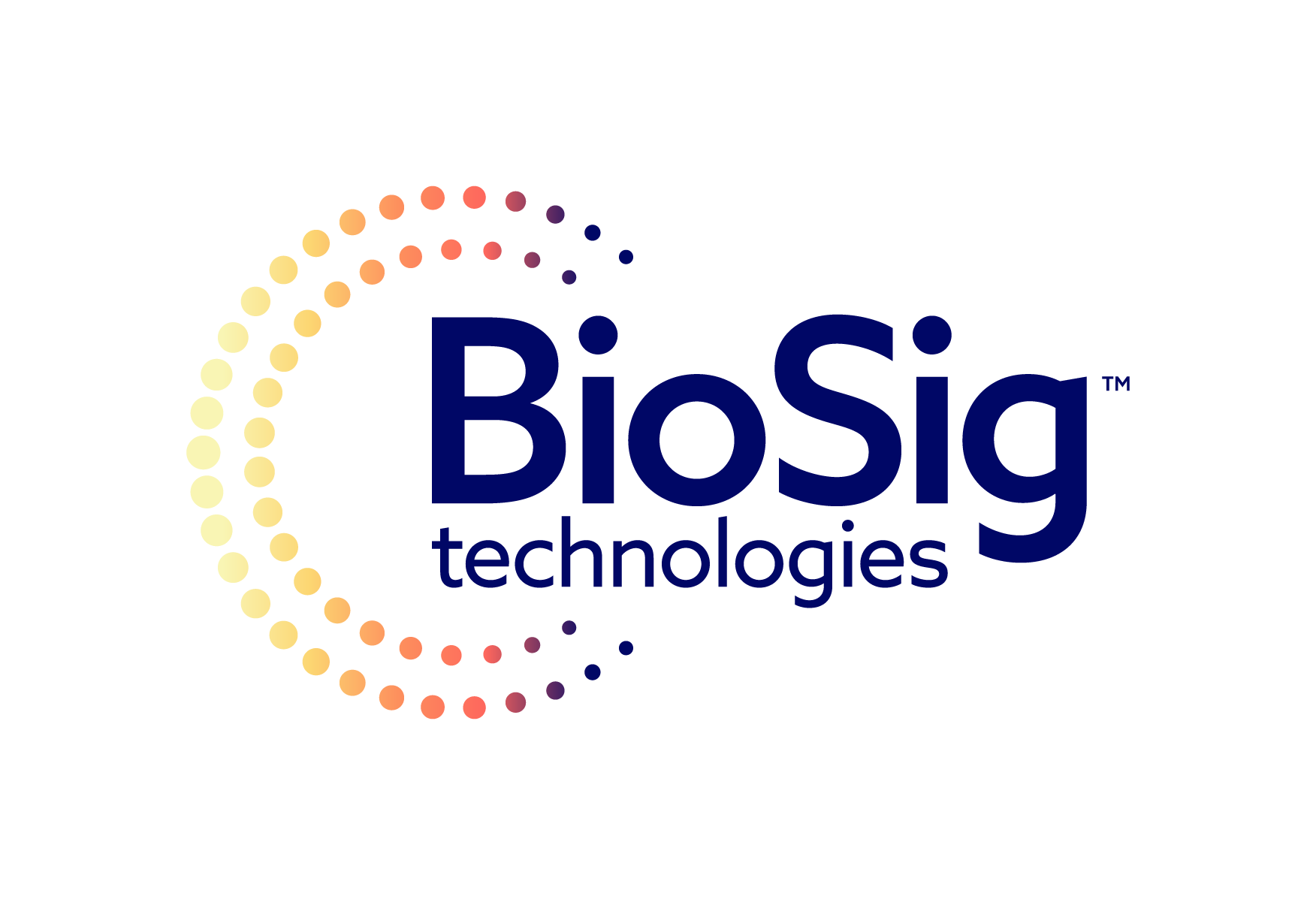Blockchain
Blocks & Headlines: Today in Blockchain – April 30, 2025

Today’s blockchain ecosystem is defined by soaring ambitions, regulatory crosswinds, and an ever-evolving tapestry of decentralized applications. In this edition of Blocks & Headlines: Today in Blockchain – April 30, 2025, we cover five pivotal developments shaping Web3’s next chapter:
-
Telegram’s TON Factory Launch – A breakthrough in on-chain scalability.
-
EU Data-Protection Ruling Threatens Full Blockchain Histories – The fight between GDPR and immutability.
-
One Championship MMA Game Debuts on Sui – A major Web3 foray into mobile gaming.
-
U.S. Senate Eyes New Blockchain Act – Bipartisan push to regulate digital assets.
-
DMG Blockchain’s AI Data-Center Investment – Convergence of crypto mining and AI infrastructure.
Below, we deliver concise yet detailed analyses of each story, infused with expert commentary on their strategic significance. Read on to understand how these trends will influence protocol adoption, developer incentives, regulatory frameworks, and the future of decentralized networks.
1. Telegram’s TON Factory Boosts On-Chain Scalability
What happened:
Telegram’s Open Network (TON) team officially unveiled TON Factory, a novel toolkit designed to streamline the deployment and scaling of decentralized applications. Built atop TON’s sharded architecture, TON Factory enables developers to spin up isolated “factories”—subnets that can host smart contracts, NFTs, and DeFi modules—while sharing security guarantees with the main chain. According to the announcement, early tests show that each factory can process up to 15,000 transactions per second (TPS) in isolation, with near-instant finality.
Why it matters:
Scalability remains blockchain’s Achilles’ heel. TON Factory’s factory-of-subnets approach promises to lower the barrier to entry for high-throughput dApps—everything from micro-payment systems to real-time gaming. By offering elastic compute and fee-optimization mechanisms, Telegram aims to undercut legacy Layer-1 networks and attract a new generation of builders.
Opinion & Implications:
-
Developer Experience: Abstractions like preconfigured factories could accelerate time-to-market for teams lacking deep consensus expertise.
-
Network Effects: If TON’s UX outpaces rivals (e.g., Ethereum’s zk-rollups or Solana’s Turbine), we may see a migration of liquidity and talent.
-
Security Trade-Offs: Isolating factories can mitigate cross-dApp failures, but adds complexity to transaction routing and dispute resolution. Audits will be essential to validate this novel model.
Source: Cointelegraph – Telegram TON Factory Launch
2. EU Regulators Propose Deleting Entire Blockchains for GDPR
What happened:
European data-protection authorities have floated a radical interpretation of GDPR: the “right to erasure” could extend to purging entire on-chain histories containing personal data. Under this view, controllers operating within the EU must either anonymize linked data or entirely delete chain segments—potentially forcing chains to implement selective pruning or permissions.
Why it matters:
Blockchain’s immutability ethos directly clashes with GDPR’s erasure mandate. If regulators enforce selective deletion, networks may need to retrofit privacy-preserving layers (e.g., zero-knowledge proofs, chameleon hashes) or risk noncompliance fines up to 4% of global turnover.
Opinion & Implications:
-
Protocol Evolution: Expect a surge in privacy-by-design protocols that segregate PII off-chain while anchoring proofs on-chain.
-
Jurisdictional Fragmentation: Projects may geo-fence EU users or spawn EU-compliant forks—fracturing unified global ledgers.
-
Commercial Impact: Exchanges and custodians face urgent deadlines to audit on-chain data holdings and deploy erasure tools—or face hefty penalties.
Source: Daily Hodl – EU Blockchain Erasure
3. One Championship’s MMA Game Launches on Sui for iOS/Android
What happened:
One Championship, Asia’s premier martial-arts league, has partnered with Mysten Labs to release “ONE Fight Manager”—a play-to-earn mobile title powered by the Sui blockchain. Available now on iOS and Android, the game lets users train NFT fighters, compete in PvP leagues, and earn SUI tokens through ranked matches. Mysten Labs touts sub-two-second transaction finality and near-zero gas fees, enabling seamless gameplay even for on-chain microtransactions.
Why it matters:
Gaming remains the killer app for mass blockchain adoption. By leveraging Sui’s Move VM and object-centric model, ONE Fight Manager addresses two critical pain points: UX friction and cost barriers. Real-time, feeless interactions are vital to onboard traditional gamers accustomed to instant feedback loops.
Opinion & Implications:
-
User Acquisition: High-profile IP like One Championship can drive millions of installs—and funnel new users into the broader Sui ecosystem.
-
Economics & Tokenomics: Careful tuning of token emission and NFT scarcity will determine whether the game sustains long-term engagement or succumbs to “play-to-earn” collapse.
-
Cross-Chain Synergy: Success here may inspire similar partnerships on Aptos, Ethereum, or emerging Layer-1s, intensifying competition for flagship gaming titles.
Source: Decrypt – ONE Championship Sui Game
4. Ohio Senator Leads Push for U.S. Blockchain Act
What happened:
Senator J.D. Kerns (R-OH) has introduced the Blockchain Innovation and Consumer Protection Act, aiming to create a federal framework for digital-asset oversight. Key provisions include:
-
Defined Classifications: Differentiating between payment tokens, security tokens, and utility tokens.
-
Licensing Regime: Establishing a “Digital Asset Services Commission” to grant interstate licenses for exchanges and custodians.
-
Consumer Safeguards: Mandatory proof of reserves, clear disclosure requirements, and dispute-resolution protocols.
Why it matters:
After years of fragmented state laws and agency turf wars, this Act represents Congress’s first cohesive effort to legislate blockchain. By preempting state-level divergence, it could streamline compliance for businesses—provided it balances innovation with investor protection.
Opinion & Implications:
-
Regulatory Clarity: Clear definitions can foster institutional entry, reducing legal ambiguity that stifles corporate treasuries from adopting crypto.
-
Unintended Consequences: Overly stringent licensing could entrench incumbents and erect high barriers for startups.
-
Global Competitiveness: U.S. leadership in blockchain law may influence other jurisdictions—critical as Asia and Europe race to craft their own regulatory regimes.
Source: The Street – Blockchain Act Proposal
5. DMG Blockchain Solutions Invests in 2MW of AI Data-Center Gear
What happened:
DMG Blockchain Solutions Inc. has announced the acquisition of two megawatts of high-density GPU infrastructure, repurposed for both crypto-mining and AI-model training workloads. Housed in a new Quebec data center, the multi-use clusters will dynamically allocate capacity between proof-of-work operations and commercial AI clients—leveraging off-peak pricing to optimize ROI.
Why it matters:
The convergence of crypto-mining and AI training infrastructure underscores growing synergies between two of the most compute-hungry industries. By offering GPUs for rent during mining downtimes, DMG anticipates 30% higher utilization rates compared to mono-purpose facilities.
Opinion & Implications:
-
Revenue Diversification: Dual-use data centers can hedge against crypto price swings and tap into booming AI-as-a-service demand.
-
Energy Efficiency: High-efficiency GPUs paired with Quebec’s hydroelectric power may set new benchmarks for sustainable compute.
-
Competitive Landscape: Other mining operators may follow suit, catalyzing a wave of AI-crypto hybrid hosting providers.
Source: GlobeNewswire – DMG AI Infrastructure Purchase
Conclusion
April 30, 2025, illuminated blockchain’s boundless dynamism: scalability breakthroughs at Telegram’s TON Factory; privacy versus immutability in the EU’s GDPR debate; mass-market gaming on Sui; legislative clarity from Capitol Hill; and the AI-crypto infrastructure nexus in Quebec. These stories reveal an industry simultaneously innovating at the protocol layer, grappling with regulation, and exploring cross-sector partnerships. For developers, investors, and policymakers alike, the imperative is clear: build resilient architectures that anticipate regulatory shifts, prioritize user experience, and harness synergies across emerging technologies. Stay tuned to Blocks & Headlines tomorrow for your next daily briefing on the pulse of blockchain’s evolving frontier.
The post Blocks & Headlines: Today in Blockchain – April 30, 2025 appeared first on News, Events, Advertising Options.
Blockchain
BioSig Technologies, Inc. Signs Definitive Share Exchange Agreement with Streamex Exchange Corp. to Launch First-Mover Real-World Asset (RWA) Tokenization Company Bringing Commodity Markets On-Chain.
Blockchain
From Onboarding to Settlement in Minutes: TransFi Launches BizPay to Redefine Global Business Payments

TransFi
Blockchain
Blocks & Headlines: Today in Blockchain – May 22, 2025

The blockchain universe never sleeps. From pioneering cross-border payment systems in Central America to city-wide crypto strategies in New York City, today’s headlines reveal an industry maturing at breakneck speed. In this edition of Blocks & Headlines, we explore five landmark developments:
-
Guatemala’s Banco Industrial integrates blockchain for seamless cross-border remittances.
-
NYC Mayor’s Office unveils a comprehensive crypto and blockchain roadmap.
-
OSR Holdings, BCM Europe & Taekwondo Cooperative sign an MOU to launch the OSRH token.
-
Bybit’s “Chicken Trader” livestream—crypto meets poultry in the world’s first poultry-powered trading showdown.
-
FIFA taps Avalanche to build a dedicated blockchain for its NFT platform.
These stories underscore three key trends reshaping the ecosystem:
-
Institutional Adoption & Regulation: From national banks to municipal governments, legacy institutions are embracing decentralized technologies.
-
Tokenization & Community Engagement: Strategic partnerships are launching specialized tokens that bridge niche communities with global markets.
-
Innovative Use Cases: Whether gaming, entertainment, or live-stream events, blockchain’s versatility spawns ever-more creative applications.
Join us as we unpack the implications, weigh the opportunities, and forecast where these trajectories might lead.
1. Guatemala’s Largest Bank Integrates Blockchain for Cross-Border Payments
What Happened
Guatemala’s Banco Industrial, the country’s biggest financial institution, announced the deployment of a private‐permissioned blockchain network to streamline remittances from the U.S. into Guatemala City and beyond. The solution reduces settlement times from days to minutes, cuts fees by up to 60 %, and offers real-time traceability for senders and receivers.
Source: Cointelegraph
Analysis & Commentary
-
Financial Inclusion Boost: Remittances account for over 12 % of Guatemala’s GDP. By minimizing friction and cost, blockchain integration will extend financial services to remote communities reliant on diaspora funds.
-
Risk & Compliance: Permissioned networks allow Banco Industrial to retain AML/KYC controls, mitigating concerns around illicit flows. This hybrid approach demonstrates that enterprise blockchain can balance decentralization with regulatory rigor.
-
Regional Ripple Effects: Neighboring Central American banks are watching closely. Should Guatemala’s pilot succeed, we can expect a domino effect across El Salvador, Honduras, and Costa Rica—each seeking to capitalize on faster, cheaper cross-border rails.
Implications
Legacy banks worldwide should view this as a blueprint: private blockchains can coexist with existing compliance frameworks while delivering transformative user benefits. Early movers will capture remittance market share and cultivate fintech partnerships across the Latin American corridor.
2. NYC Mayor Unveils Ambitious Crypto & Blockchain Agenda
What Happened
New York City Mayor Eric Adams detailed his administration’s multi-pronged strategy to make NYC a global crypto hub. Key initiatives include:
-
A regulatory sandbox for crypto startups to pilot DeFi, NFTs, and token-based fundraising under city supervision.
-
Partnerships with CUNY and Columbia University for blockchain research and talent development.
-
Deployment of a blockchain-based public record system for land titles and business registrations.
Source: GovTech
Analysis & Commentary
-
Regulatory Harmony vs. Overreach: By offering a controlled sandbox rather than blanket deregulation, NYC signals a nuanced stance—encouraging innovation without sacrificing consumer protection.
-
Talent Pipeline: Academic partnerships aim to remedy the talent shortage plaguing blockchain firms. Local graduates trained in distributed ledger technologies (DLT) will feed startups, financial institutions, and government agencies.
-
Public Services on Chain: Land registries and business filings on blockchain promise greater transparency and fraud reduction. If scaled effectively, NYC could set a global standard for government-blockchain integration.
Implications
Other major cities—London, Singapore, Dubai—will feel pressure to match NYC’s playbook. Municipal leaders should prioritize sandbox frameworks and academia-industry liaisons to nurture homegrown crypto ecosystems.
3. OSR Holdings, BCM Europe & Taekwondo Cooperative Launch OSRH Token
What Happened
OSR Holdings, BCM Europe, and the Taekwondo Cooperative signed a strategic Memorandum of Understanding to co-develop the OSRH token, a blockchain-based digital asset aimed at supporting global Taekwondo practitioners. Features include:
-
Membership Rewards: Tokens earned through event participation, coaching certifications, and tournament wins.
-
Decentralized Governance: Athletes vote on sponsorship allocations and rule-change proposals via on-chain ballots.
-
Marketplace Integration: A dedicated NFT marketplace for Taekwondo memorabilia, from digital belts to highlight reels.
Source: PR Newswire
Analysis & Commentary
-
Niche Tokenization: OSRH token exemplifies the power of community-focused tokens. By aligning incentives with passion points—training, competition, governance—stakeholders gain ownership and engagement.
-
Governance Innovation: Athlete-driven decision-making on sponsorship and funding disrupts top-down federation models. This could democratize sports governance across disciplines.
-
Commercial Ecosystem: The NFT marketplace offers monetization channels for athletes and federations alike. Strategic royalties on secondary sales ensure sustainable funding.
Implications
Other sports federations and niche communities should explore token models that blend rewards, governance, and commerce. Successful launches will hinge on clear utility, user education, and regulatory compliance in key jurisdictions.
4. Bybit Presents “Chicken Trader”: The World’s First Poultry-Powered Trading Showdown
What Happened
Cryptocurrency exchange Bybit debuted “Chicken Trader,” a live-streamed event where two contestants trade crypto pairs—and manage live chickens—to earn “Egg Points.” Viewers can stake on their favorite trader, earning NFTs and token rewards based on performance.
Source: PR Newswire
Analysis & Commentary
-
Gamification Meets DeFi: Chicken Trader’s fusion of live-stream engagement, staking mechanics, and NFTs exemplifies Web3’s playful ethos—turning trading into interactive entertainment.
-
User Acquisition Strategy: Bybit gamified acquisition funnels, leveraging viral social content to onboard nontraditional crypto audiences intrigued by the novelty factor.
-
Regulatory Tightrope: Combining staking with competition and livestock raises jurisdictional questions around gambling, securities, and animal welfare. Bybit must navigate diverse regulations to scale globally.
Implications
Other exchanges will replicate gamified formats to differentiate UX and grow communities. Yet long-term viability demands balancing flashy live-events with rigorous compliance, sustainable tokenomics, and authentic value for participants.
5. FIFA Taps Avalanche to Power Its NFT Platform
What Happened
Global soccer body FIFA selected the Avalanche blockchain to launch its official NFT marketplace, featuring digital collectibles—from World Cup highlights to player-card packs. Avalanche’s high throughput and low fees were cited as decisive factors.
Source: TradingView (via Cointelegraph)
Analysis & Commentary
-
Scalability & Sustainability: Avalanche’s consensus mechanism delivers sub-second finality and carbon-offset commitments, aligning with FIFA’s environmental pledges.
-
Fan Engagement: Tokenized highlights and limited-edition digital memorabilia expand revenue streams beyond broadcast rights, offering fans verifiable ownership and collectible provenance.
-
Interoperability: Avalanche’s growing DeFi ecosystem enables future integrations—staking fan tokens, launching prediction-market games, or embedding NFT rewards in FIFA’s mobile apps.
Implications
Major sports leagues and entertainment brands eyeing NFT forays will scrutinize Avalanche’s performance under FIFA’s global load. Blockchain platforms must prove they can handle spikes during marquee events—kickoff times, finals, transfer windows—while preserving UX and sustainability goals.
Conclusion
Today’s Blocks & Headlines illustrate blockchain’s multifaceted evolution:
-
Legacy institutions like banks and city governments are unlocking new efficiencies and transparency through private and public DLT networks.
-
Community-driven tokens are redefining governance and monetization in sports and niche domains.
-
Innovative engagement—from poultry-fueled trading spectacles to global soccer NFTs—demonstrates blockchain’s capacity for gamification, fan loyalty, and novel revenue models.
Yet with opportunity comes responsibility: scalable architectures must coexist with robust compliance; token economies require thoughtful design to sustain value; and regulators, academia, and industry must collaborate to craft frameworks that balance innovation with consumer protection.
As blockchain weaves deeper into finance, governance, entertainment, and sports, stakeholders who embrace strategic partnerships, prioritize user education, and invest in resilient infrastructures will lead the charge into Web3’s next frontier.
The post Blocks & Headlines: Today in Blockchain – May 22, 2025 appeared first on News, Events, Advertising Options.
-

 Blockchain Press Releases5 days ago
Blockchain Press Releases5 days agoCoinW Unveils Industry-First Futures Protection Program:Instant Refunds Designed to Safeguard Traders
-

 Blockchain4 days ago
Blockchain4 days agoBlocks & Headlines: Today in Blockchain – May 19, 2025 | DoubleZero, Toobit, Story Protocol, Marco Polo, Argo Blockchain
-

 Blockchain Press Releases2 days ago
Blockchain Press Releases2 days agoCM Global Services (CMGS) Secures Exclusive Multi-Year Logistics & Procurement Partnerships with Compass Mining and NovoMod
-

 Blockchain Press Releases2 days ago
Blockchain Press Releases2 days agoOnRe, Backed by Ethena, Solana Ventures, and RockawayX Launches Structured Yield Product Combining Real-World Stability and On-Chain Upside
-

 Blockchain Press Releases4 days ago
Blockchain Press Releases4 days agoHTX Unveils Finalists for $6M Mars Program Special Edition, Space Journey Selection Enters Final Phase
-

 Blockchain Press Releases4 days ago
Blockchain Press Releases4 days agoHTX Launches Multi-Assets Collateral Mode for USDT-Margined Futures, Empowering Traders With Enhanced Capital Efficiency
-

 Blockchain3 days ago
Blockchain3 days agoVanEck Prepares to Launch PurposeBuilt Fund to Invest in Real-World Applications on Avalanche
-

 Blockchain Press Releases3 days ago
Blockchain Press Releases3 days agoHTX Executives Go Face-to-Face: Justin Sun & Molly Dive Into Market Strategy, Space Visions, and More Opportunities




























